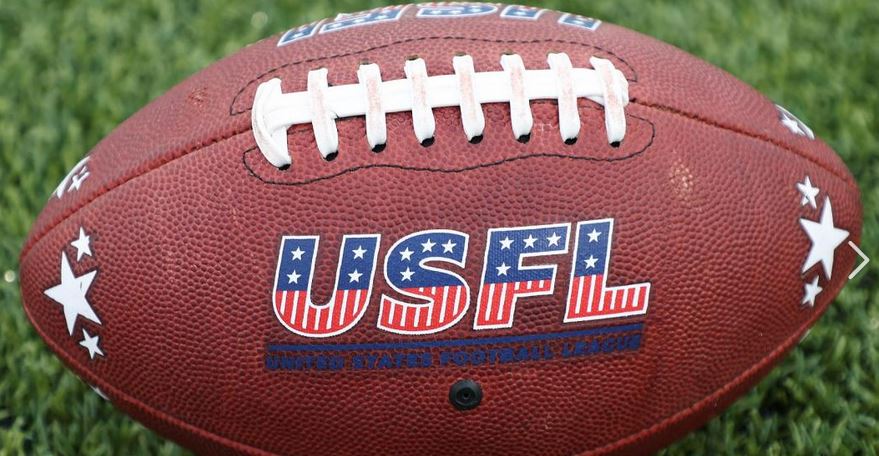Podcast: Play in new window | Download
Subscribe: RSS
If you happened to watch Saturday night’s initial USFL football game (televised by both Fox and NBC), you saw a large crowd in Birmingham, Alabama cheering their hometown Stallions to a 28-24 victory over the New Jersey Generals. After the game, the Birmingham crowd was treated to a fireworks show. A tight game with an exciting finish and a post-game fireworks display! What a great start for national television, right?
Then the United States Football League played the other three football games to complete the league’s opening weekend. The optics were less than stellar. Though the teams and their new uniforms looked rather spiffy, there was a glaring absence at the other three USFL games.
A crowd.
The 2022 version of the USFL is running a very tight financial ship. The league (which is owned by Fox Sports) has decided to play all of its regular season contests in Birmingham, Alabama. Every single regular season game will be played there.
Your faithful SwampSwami wrote about this over a month ago. Check it out to learn more about this new incarnation of the USFL.
Though the new USFL was breaking in a brand new $200 million football stadium in Birmingham (which will become the home for the UAB Blazers this fall), the Alabama’s largest city and the state’s fanatical football fans are being counted-on to support the USFL’s other seven teams not named Birmingham, too.
Though 35,000 people attended the Birmingham Stallions home opener on Saturday night, there were (perhaps) 200 fans in the stands for each of the other three USFL games played on Easter Sunday and Monday in Alabama’s Steel City. With a 45,000 seat football stadium, it was fairly easy to count the crowd – one by one.
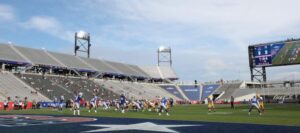
Without any fan excitement in the house, the other three USFL games looked like glorified scrimmage games being played for television.
I watched a portion of each of the four USFL games played in Birmingham this weekend. The quality of play is much like that of other recent attempts at spring professional football. It’s probably the equivalent of seeing Double AA baseball games compared to Major League Baseball. The players are still very good, but most of them are not in the NFL for a reason.
Lest we forget, the Alliance of American Football (AAF – RIP 2019 after just eight weeks) and the XFL (Version 2 -RIP 2020 after just five weeks of play) are recent reminders that a few entrepreneurial minds continue to believe that there may be a proverbial pot of gold at the end of the spring football rainbow. Though the quality of the football played on the field was, at times, very interesting and entertaining, the buying public (whether at-home television audiences or paying customers at the football stadium) tends to quickly lose interest after the first week or two of spring pro football games.
In last weekend’s debut, the USFL scored acceptable television ratings for the opening week of play.

In addition to the Saturday night prime time game on Fox and NBC (which grabbed three million television viewers), the three other games played on Easter Sunday and Monday were watched by about half of the Saturday night audience.
Fox Sports previously indicated that they are hoping to average 1.4 million viewers per game for the new USFL this season. Based on Week #1, they succeeded.
However, with nine more weekends of games to be played in the regular season, the probability is high that the weekly television ratings may slide. That’s why every other spring football league during my lifetime (and there have been plenty!) has failed to survive.
Let’s take a closer look at the USFL’s first weekend of play and make some observations:
Television Coverage – The network production for the four USFL games came across well. The brand new stadium in Birmingham is “right sized” for the product and appears to have the technical capability of producing a quality television product. The announce crews were, generally, competent and not a distraction from the games.
I liked the use of microphones to hear what the coach and quarterbacks were doing on the field of play. It’s amazing to see how quickly the new plays were being called and relayed to the team. There is no time to waste as the USFL’s 35 second play clock starts immediately after the previous play ends.
Visually, I’m not as sold on the over-utilization of drone cameras hovering around the field. Though a few of the camera angles were interesting (an interception returned for a touchdown, for example), most of the drone camera shots felt dizzying with a better angle available from a traditional stationery camera. The drone camera gimmick wears off quickly.
These technical issues should improve as the season goes along. Week 1 Grade: B
Team Nicknames and Uniforms – Several teams of the original USFL (circa 1984) are back once again – 38 years later. They are keeping the same 1984 team nicknames, too. After one week, the USFL South (4-0) is totally dominating the USFL North (0-4).
USFL – North
Michigan Panthers – 0-1
New Jersey Generals – 0-1
Philadelphia Stars – 0-1
Pittsburgh Maulers – 0-1
USFL – South
Birmingham Stallions – 1-0
Houston Gamblers – 1-0
New Orleans Breakers – 1-0
Tampa Bay Bandits – 1-0
My lovely wife asked me, “So, why is Houston called the “Gamblers” when there isn’t a casino anywhere within 150 miles of the city?” As usual, she asked a great question!
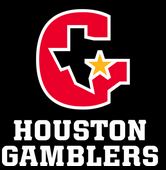
It’s likely because the 1984 USFL Houston Gamblers adopted that nickname based on the Kenny Rogers hit song from the late 1970’s which continued to stay in the headlines as a weekly television show into the early 1980’s. As attendance in Houston dwindled during the second year of the USFL, the Houston Gamblers lost a lot of money and were merged with the surviving New Jersey Generals.
Yes…you’ve got to know when to hold ‘em…know when to fold ‘em!
As for the new USFL’s uniforms, they were quite colorful and stylish. Other than Pittsburgh’s two-toned blue and orange color combination, the USFL uniforms look professional.
USFL team nicknames and color schemes – Week 1 Grade: B
On-field Performance – The one thing which really jumps out at you is the lack of quarterback talent in the USFL. Though several of the players have some experience from the Canadian Football League or had been clipboard holders (third string) on a few NFL teams, only one USFL quarterback even passed for 200 yards in week #1.
Byron Scott of the Philadelphia Stars (who played college football at Occidental College) passed for 202 yards this weekend, while Shea Patterson of the Michigan Panthers (via the University of Michigan and Ole Miss) totaled just 192 yards for the second highest passing total of Week #1. The USFL’s passing statistics were simply pathetic.
The hometown Birmingham Stallions (led by former Louisiana Tech head coach Skip Holtz) inserted his former starting quarterback for the Bulldogs in the second half.
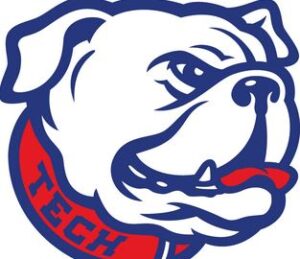
J’Marr Smith passed for 156 yards in relief and scored the game’s final touchdown on a quarterback roll-out. The coach/quarterback connection really paid-off for Birmingham.
The defenses for each USFL team seemed to be far ahead of the offense (which is expected with less than one month of practice thus far).
The USFL Week #1 scoring was surprisingly low. The eight teams averaged a little over 17 points apiece. The scoring should improve (we hope). Even the placekicking was shoddy in Week #1 with just five out of 12 field goals converted in the four games.
Overall, the on-field play was “OK” but not very special. Week 1 Grade: C-
Summary and Final Grade – The new USFL debut last weekend played well for television but was a bust in the stands. I don’t know if the league actually expected hometown fans from places like Houston, New Orleans, or Pittsburgh to fly or drive all the way to northern Alabama to watch these games (if so, it was a huge failure in Week #1). The USFL ticket prices in Birmingham are really cheap. Just $10 gets you and up to three young children into any USFL football game. The lack of fan interest (other than for the hometown Stallions) is not unsurprising. This error falls squarely on the Fox Sports executives. They want to minimize all costs, so the lack of fan support for the non-Birmingham teams should have been expected.
As we covered in the previous post, the new USFL is all about minimizing travel costs, stadium costs, and management overhead across the league. As the spring weather gets hotter in Alabama, I do not expect local attendance to improve.
Then again, this league is geared for television, so maybe Fox Sports doesn’t really care. Perhaps the USFL should invest in some artificial crowd noise technology to give the players and viewers at home the feeling that games are being played in front of a stadium full of excited fans.
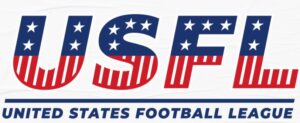
USFL Overall Week 1 Grade: C
The USFL’s Week #1 wasn’t a bust, but it was far from a huge success. The “excitement” factor was missing from three of the four games played in a nearly empty stadium in Birmingham. The true test will come starting this weekend. If there isn’t a noticeable slippage in the television ratings, then the USFL has a chance to succeed.
I just wouldn’t bet on it.

